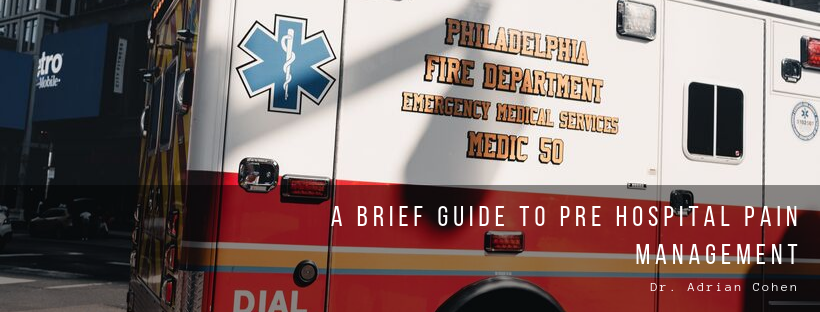Treating pain is a standard job for EMS providers. While it may be something they do all day, every day, it’s not as straight forward as you may think. Pain control is an art, and EMS providers must understand what’s causing the pain, how the patient is reacting to the pain, and the methods with which to subdue it in order to care for their patients as much as they possibly can. Below you’ll find a brief guide that goes over some of the common practices that are taken in order to alleviate pain in a pre-hospital environment.
Assessment
The first thing EMS providers should find out is the main complaint of the patient. This isn’t always as obvious as it may sound, as sometimes the pain is from an illness as opposed to a physical injury. A popular method of determining the amount of pain your patients feel is to use the verbal analog scale. This scale allows the patient to grade their pain as you treat them, and EMS providers should document each response on the patient’s report.
Pain Control
Many healthcare providers immediately think of medication when they think of controlling pain, but basic techniques such as splinting a patient can often provide plenty of pain relief without having to involve any type of medication. Splinting usually begins with splinting or immobilizing the limb that’s affected by the injury. Immobilizing it will reduce the patient’s pain and lessens the chance of a neurovascular injury occurring during transportation to the hospital. It’s then important to keep the immobilized limb elevated, as it increases the venous flow from the limb and decreases arterial blood flow while also limiting swelling. In most situations, you want to have the injured limb elevated above heart level, but this isn’t always possible. A secondary option is elevating it using a pillow or something similar to give relief. Last but not least, applying ice to painful areas is a must. Cooling an injured area can lower a patient’s pain perception by decreasing the pain information transmitted from the nerves. It can also limit swelling, which means less pain.
Medication
There are many different medications out there, all of which do different things for different situations. An EMS provider is responsible for knowing what all of these medications do as well as knowing the best situations to use them in. In the hospital, one of the most common ways of treating pain is through anti-inflammatory medication. They’re typically safe to be used in the prehospital environment and have the potential to decrease the need for more intense medications. Certain anti-inflammatory medications such as ketorolac/ketamine can also be given as an intramuscular injection or through an IV, and are useful for nausea or fever that are associated with their pain. When it comes to more intense pain medication, in many countries the inhaled anesthetic agent methoxyflurane is given via a portable inhaler.
Then there are the strongest pain killers: opioids are the most popular. Morphine, in particular, can come with many side effects if not administered correctly, but by giving it to the patient in a slow, controlled manner with frequent checkups, it should be safe to use. Opioids are also great for the prehospital setting due to being able to use a medication called Naloxone (Narcan) to reverse their effects.
Pain control is never black and white, even for experienced EMS providers.
Luckily, there are plenty of methods with which pain can be treated, whether using simple tactics such as splinting of a fracture can mitigate the need for stronger measures.
And of course, reassuring and supporting the injured person does wonders!

